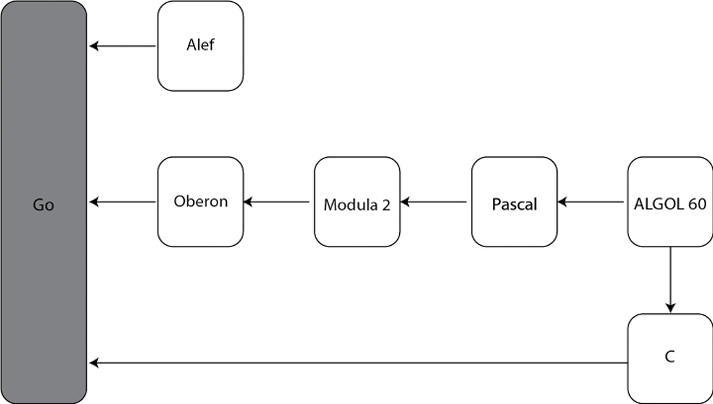Introducing Go
Go is an open-source systems programming language, initially developed as an internal Google project that went public back in 2009. The spiritual fathers of Go are Robert Griesemer, Ken Thomson, and Rob Pike.
Although the official name of the language is Go, it is sometimes (wrongly) referred to as Golang. The official reason for this is that https://go.org/ was not available for registration and golang.org was chosen instead—however, nowadays, the official Go website is https://go.dev/. Keep in mind that when you are querying a search engine for Go-related information, the word Go is usually interpreted as a verb; therefore, you should search for golang instead. Additionally, the official Twitter hashtag for Go is #golang.
Let us now discuss the history of Go and what that means for someone who wants to learn Go.
The history of Go
As mentioned earlier, Go started as an internal Google project that went public back in 2009. Griesemer, Thomson, and Pike designed Go as a language for professional programmers who want to build reliable, robust, and efficient software that is easy to manage. They designed Go with simplicity in mind, even if simplicity meant that Go was not going to be a programming language for everyone or everything.
The figure that follows shows the programming languages that directly or indirectly influenced Go. As an example, Go syntax looks like C, whereas the package concept was inspired by Modula-2.

Figure 1.1: The programming languages that influenced Go
The deliverable was a programming language with tools and a standard library. What you get with Go, apart from its syntax and tools, is a rich standard library and a type system that tries to save you from easy mistakes, such as implicit type conversions, unused variables, and unused packages. The Go compiler catches most of these easy mistakes and refuses to compile until you do something about them. Additionally, the Go compiler can find difficult-to-catch mistakes such as race conditions.
If you are going to install Go for the first time, you can start by visiting https://go.dev/dl/. However, there is a big chance that your UNIX variant has a ready-to-install package for the Go programming language, so you might want to get Go by using your favorite package manager.
As Go is a portable programming language, almost all presented code is going to work fine on any modern Microsoft Windows, Linux, or macOS machine without any changes. The only Go code that might need some small or big adjustments is the code that deals with the operating system. Most of that code is covered in Chapter 7, Telling a UNIX System What to Do.
The advantages of Go
Go comes with some important advantages for developers, starting with the fact that it was designed and is currently maintained by real programmers. Go is also easy to learn, especially if you are already familiar with programming languages such as C, Python, or Java. On top of that, due to its simplified and elegant syntax, Go code is pleasant to the eye, which is great, especially when you are programming applications for a living and you have to look at code on a daily basis. Go code is also easy to read, which means that you can make changes to existing Go code easily, and offers support for Unicode out of the box. Lastly, Go has reserved only 25 keywords, which makes it much easier to remember the language. Can you do that with C++?
Go also comes with concurrency capabilities, using a simple concurrency model that is implemented using goroutines and channels. Go manages OS threads for you and has a powerful runtime that allows you to spawn lightweight units of work (goroutines) that communicate with each other using channels.
Although Go comes with a rich standard library, there are really handy Go packages, such as cobra and viper, that allow Go to develop complex command line utilities such as docker and hugo. This is greatly supported by the fact that executable binaries are statically linked, which means that once they are generated, they do not depend on any shared libraries and include all required information. In practice, this means that you can transfer an existing executable file to a different machine with the same architecture and be sure that it is going to run without any issues.
Due to its simplicity, Go code is predictable and does not have strange side effects, and although Go supports pointers, it does not support pointer arithmetic like C, unless you use the unsafe package, which can be the root of many bugs and security holes. Although Go is not an object-oriented programming language, Go interfaces are very versatile and allow you to mimic some of the capabilities of object-oriented languages, such as polymorphism, encapsulation, and composition. However, Go offers no support for classes and inheritance. Chapter 5, Reflection and Interfaces, provides more information on the subject.
Additionally, the latest Go versions offer support for generics, which simplifies your code when working with multiple data types. You can learn more about Go generics in Chapter 4, Go Generics. Finally, Go is a garbage-collected language, which means that no manual memory management is needed.































































